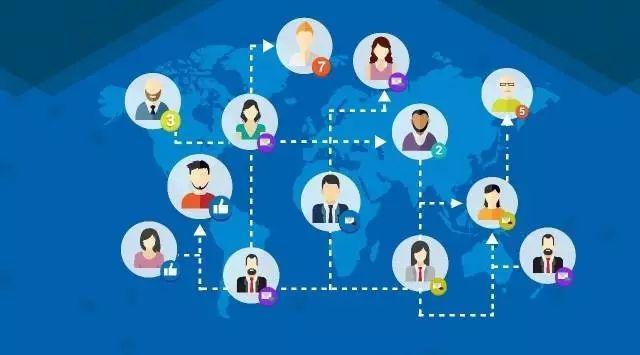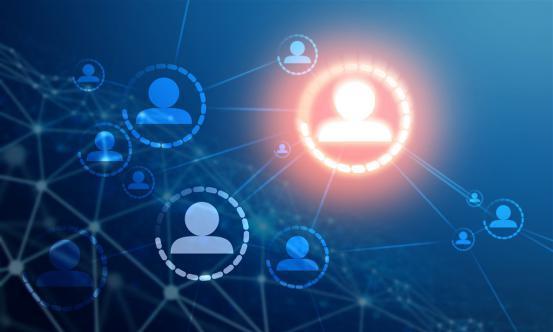What is community operation? Many people actually don’t understand this concept very well. Even sellers who have opened a store for several years may not necessarily understand how to operate the community. As a group gangster who has been around for many years, in my opinion, community operations are activists in the operation group. Here I give this group a name called core users .
Back to the point, for a small company, its core users are likely to be their entire resources, in other words, seed users used for various cold start experiments; for a large company, it may not matter if there are too many users, one less, one less, so the user base must be split.

Here we will temporarily divide this group into two categories: ordinary users and core users .
If there are few users divided, it means that their share of the overall number will be very low. If this is the case, no matter how good the operation is, the effect will be limited.
On the contrary, if there are many users divided, the operating costs will increase accordingly, and the capabilities and requirements for operation personnel will also increase accordingly.
So let’s take a look at what social operation is.
A community is a gathering of people with common attributes (such as hobbies and regions). Community operations are to gather and activate these groups through operational means, so that they have continuous and multi-frequency connections with their products.
Why do community operations
Problems that can be solved through community operations
Solve the characteristics of small user coverage and narrow expansion space;
Solve the problems of limited operational manpower, time and capacity;
Solve the problem of low official community activity;
The problem of insufficient grasp of user needs for adjustment operations.
Operation core users
Wealth will lead to wealth and ultimately achieve common prosperity
In fact, doing community operations is actually a way to operate core users first and then let core users lead ordinary users to become core users:
1. Ensure basic activity level and ensure that users will spontaneously generate content every day
Core users can be understood as activists. Operating the activists as user groups can not only ensure the normal operation of the community, but also allow operators to gain a sufficient sense of security (operators are struggling for their KPIs every day).
2. Ensure that users can be directly connected to them to get feedback
A friend who works in operations said it well: the role of operations is to connect products and users, and they should be the ones who understand users the most. Maintaining communication with them will help the team to continuously iterate the products that are more in line with user needs. In addition, communities are also an important channel for obtaining user information. The core users are also product experiencers or loyal fans of the brand. The questions they raise are likely to be insufficient products or even some bad experiences when using them. Only by ensuring that they are active will more people be willing to provide information or feedback to operators.
3. Core users can sometimes assist operators in their work
The daily work of the operators is very complicated. You can take out some of it, and after setting goals and regulations, delegate power to core users to share the workload of operations. Letting users participate in operation work can not only gain user creativity, but also enhance core users' loyalty to the community and products.
4. Help build your own brand reputation
Everyone knows that "Goubuli" is a time-honored brand in Tianjin and is a brand that has been eaten by many generations. Although it was bought by Taiwanese, the font size is still the same as Tianjin Wei. The same is true for operating core users. What they recognize is your product, a fan of your product, and more likely to be your paid user. They may directly communicate to the outside world, and their positive and negative remarks can affect many people around them.

Here is a real conversation in a subway in Tianjin:
A: What are you doing
B: Browse the headlines today and read the news
A: It's just written in a random way, what are you doing?
B: Then you can use it to read the news
A: There are so many NetEase News and Phoenix News, can't it be okay?
In this way, a headline user was led to other news apps under the guidance of his friends.
Also, if you encounter a negative or public opinion crisis, core users will come out to speak for you. During crisis public relations, no matter what official comments make, the situation will be worse, such as the Wei Jersey incident.
How to do social operations
In my opinion, running a community is the same as playing simulation business games. Here, I would like to thank the Cairo Company for its team for its early development of "Game Development Country" that gave me a lot of inspiration.
More importantly, community operation is to grasp the direction of the community according to needs, have clear division of labor within the group, establish a clear reward and punishment system and evaluate it with corresponding indicators, and use the above points to help the community get on track and gradually expand its scale.

Grasp the direction of the community according to needs
A certain operation master said:
Products must meet user needs. Community is a means to allow users to continuously stick to products at high frequency, so the direction of community establishment must meet the user needs of this product.
The first thing to do is to analyze the existing target user population, list all possible demand points, and extend the direction of the community. The existing target population is likely to be different from the user group of the early product illusion, and new analysis should be conducted based on new needs. Because the community is a collection of people with common attributes, it is far from enough users of the product or paid users of the product, so they need to explore their interests and preferences.
Secondly, we can use the hands of the community to create a lofty and meaningful vision, shape something with value to attract more users to participate, and let these users devote more time and energy to pursue it. The official will then provide welfare (material) replenishment for communities that meet development goals, encourage their community to develop themselves and establish a guiding role in the community, giving users a sense of accomplishment. Just like in the Xianxia game, the player was just a trivial character at the beginning, but after a series of tasks and tempering, he shouldered the mission of saving the world. And this mission has become their inner motivation for being willing to spend a lot of time completing tasks and even saving the world.
To do community operations, we must guide and sort out their needs from the perspective of user thinking. Not only to meet their needs within a certain range, but also to use their needs to achieve the purpose of increasing user volume, user conversion (ordinary users turn to paid users) and even product optimization and iteration.
Have a clear division of labor within the group
The powers of core users are designated by the operator and are properly provided with financial support. Community management is under the responsibility of relevant core users and is authorized by the official with a completely open attitude.
In order to enable the established user organization to carry a larger user magnitude, we can adopt a pyramid-like management structure, which is actually the same as the previous idea of operating Tieba.
After all, the number of people that can be managed and served by a small bar is limited, assuming it is 500 users. Then if this post bar is already a post bar with 10,000 people, it will take 20 small post bars. Similarly, if it were a company, the cost of twenty people would definitely be a lot, so we can change our thinking and let users manage users.
We can make users who initially bring in (head users) or continue to bring new people as middle managers, and call them core users (the top manager is the company) fully play the role of core users to build a user structure. This means that an operation staff manages 20 core users, and a core user manages 500 ordinary users, so that the number of users is 10,000, saving a lot of costs. (The idea comes from when I was internship, I felt that I could not produce so much content every day. I thought of this proposal to the leader, but it was rejected. Maybe it was because there was no incentive measure)
In the daily management of the community, manpower is needed to implement every link. When the operational manpower is limited, the power of core users is fully mobilized and the clear division of labor is used to participate in refined management, which saves manpower and ensures the execution effect. When there are insufficient (or not available), ordinary users need to be absorbed to participate in the management of the community.
Becoming a core user also requires an observation and training stage, which is divided into at least three steps: communication stage → trial stage → formally becoming a core user. Every step here requires core users to participate in the management. The QQ has given "them" a good name, so call them an administrator. The introduced new core users are added to the communication group, and the administrator will tell the responsibilities of the core users to the newcomers. Communicate with the newcomer one-on-one, which is considered as an interview. After passing, enter the probation period and clearly inform the newcomers of the probation period requirements and time nodes. Passing the probation period will be considered to be a member of the core user group (what will be rewarded every month).
The idea comes from the various major families who used to play Three Kingdoms Killing before, and this method is also commonly used: first there is a reception group-test competition-entering group/insufficient strength will not be considered. The process of thinking is as follows: After becoming a core user, new talents can enter the QQ group/WeChat group composed of core users. This user group is an important communication platform between core users. Only official and core personnel can join and have strict management systems and forming methods.

Clarify the reward and punishment system to design a complete and feasible incentive system
Formulate systems with clear rewards and punishments, including community definition, management structure, work content and work goals, and members' rights and obligations. In simulated business games, these are instilled into players in the form of values. Systems and norms are the cornerstones of the existence and operation of the community, and are also daily codes of conduct. Since users are likely to be impatient to read text descriptions, the system generally only emphasizes rights and obligations, and rights are expressed in visual graphics and text, and obligations are conveyed in other forms.
Design a complete and feasible incentive system to allow everyone to participate. Whether it is a manager, a core user, or an ordinary user, everyone in the community has the opportunity to reflect their own value, have reasons to participate and realize the values mentioned above.
This requires designing a closed-loop incentive system. Users in the community should play in the community according to the designated "game rules" to guide them to become outstanding members of the community or high-quality active users of the products.
As for the form of expression, most of them need to be analyzed in specific issues, mainly through operational means such as systems, activities and topics.
Set indicators and evaluate
Because everyone operates a community to operate a core user of a product, the effect of community operation needs to be directly or indirectly reflected in product data. In other words, not only do you need to be active, but also reflect the active effects in product data, such as the most intuitive UV, contribution amount, retention, etc. The specific data can only be analyzed within a time period, which is likely to be a month or quarter, or it may be during a certain holiday period. If none of these data can be given, and there is no effect on the surface. At least it is necessary to give the number of core users that the operators actually control, and how many core users are affected by direct control and extension.
In addition to the above points, community operators should be good at carrying out offline activities related to product themes, enrich the experience of core users, and deepen the precipitation of relationship chains. Although the article mentions content such as using users to manage communities, I still hope that everyone can treat every user with a sincere heart and truly provide services to users.







![#Laogao E-commerce Newsletter# [E-commerce Evening News on January 25]](/update/1634637709l862528272.jpg)


 EN
EN CN
CN
